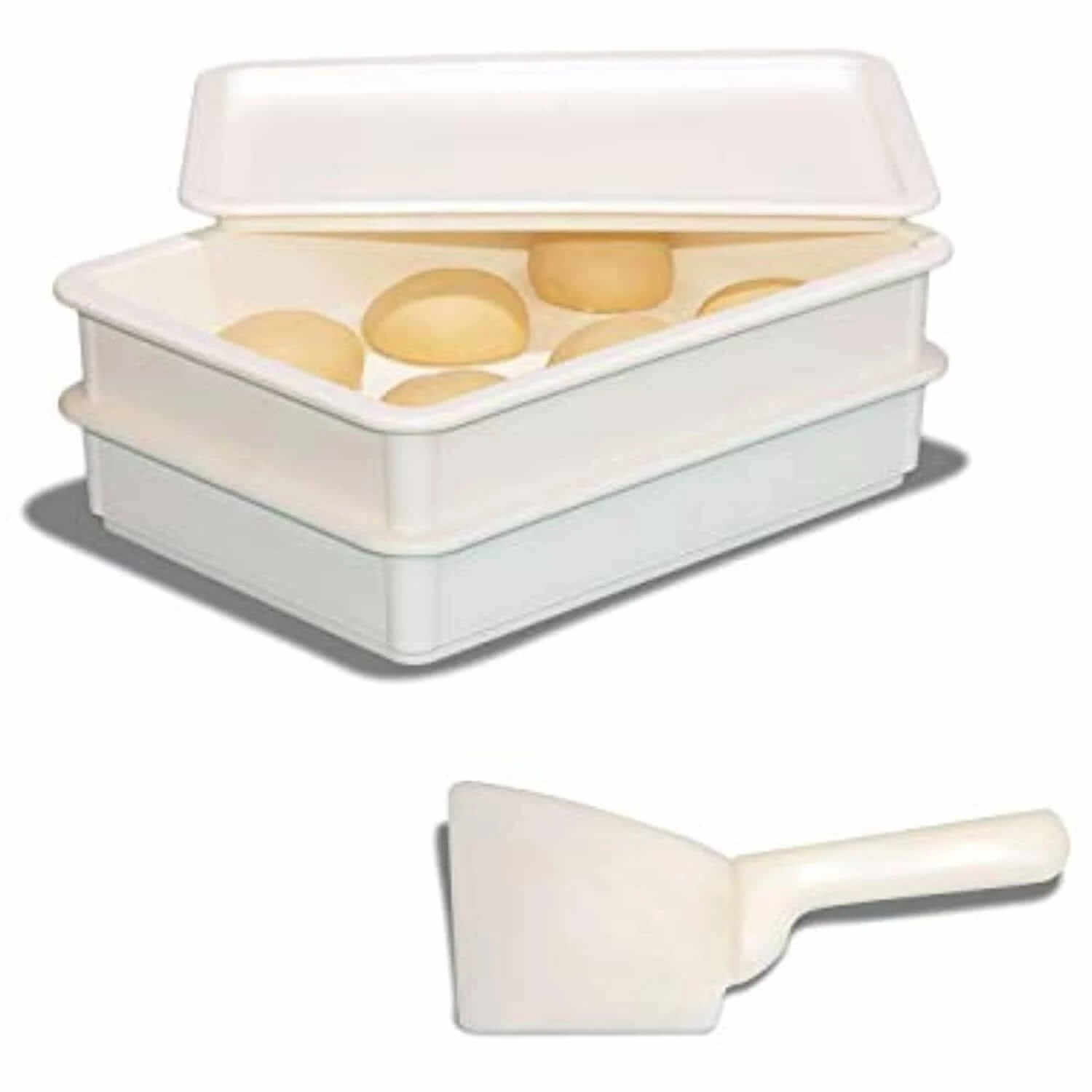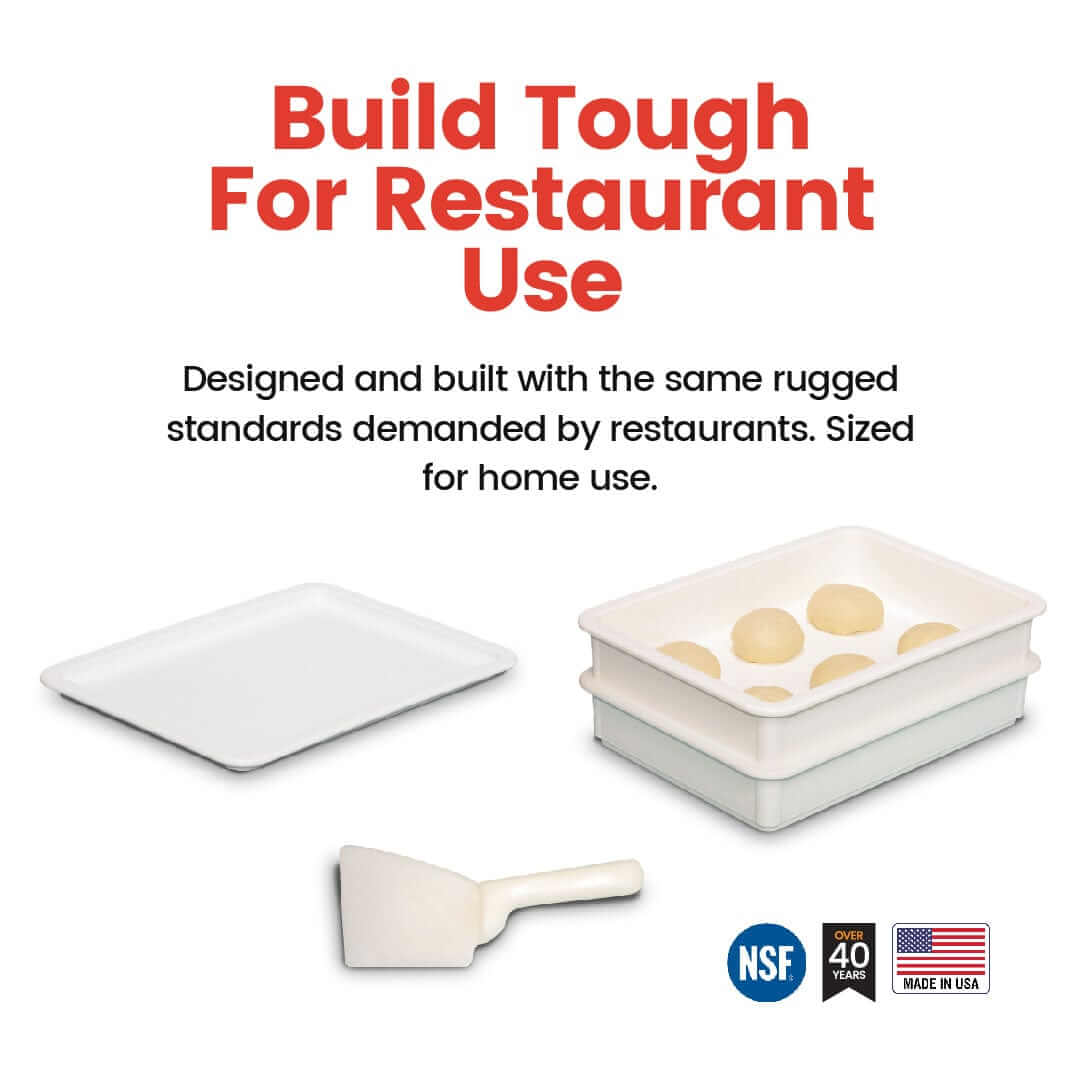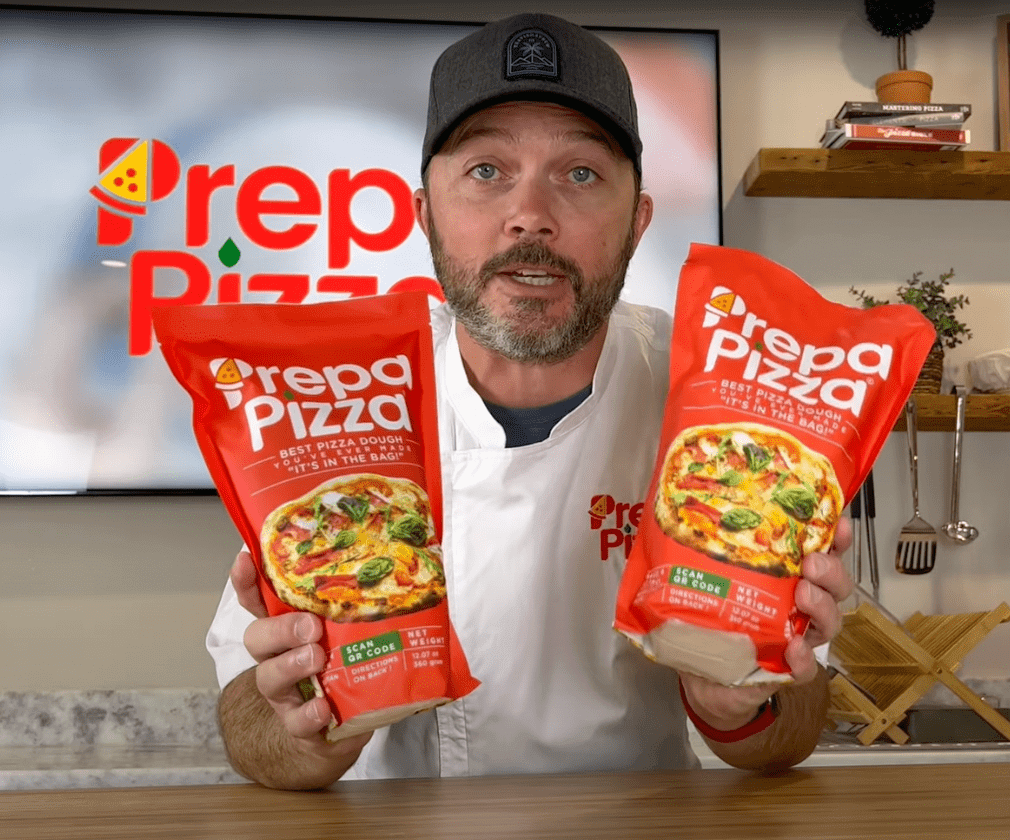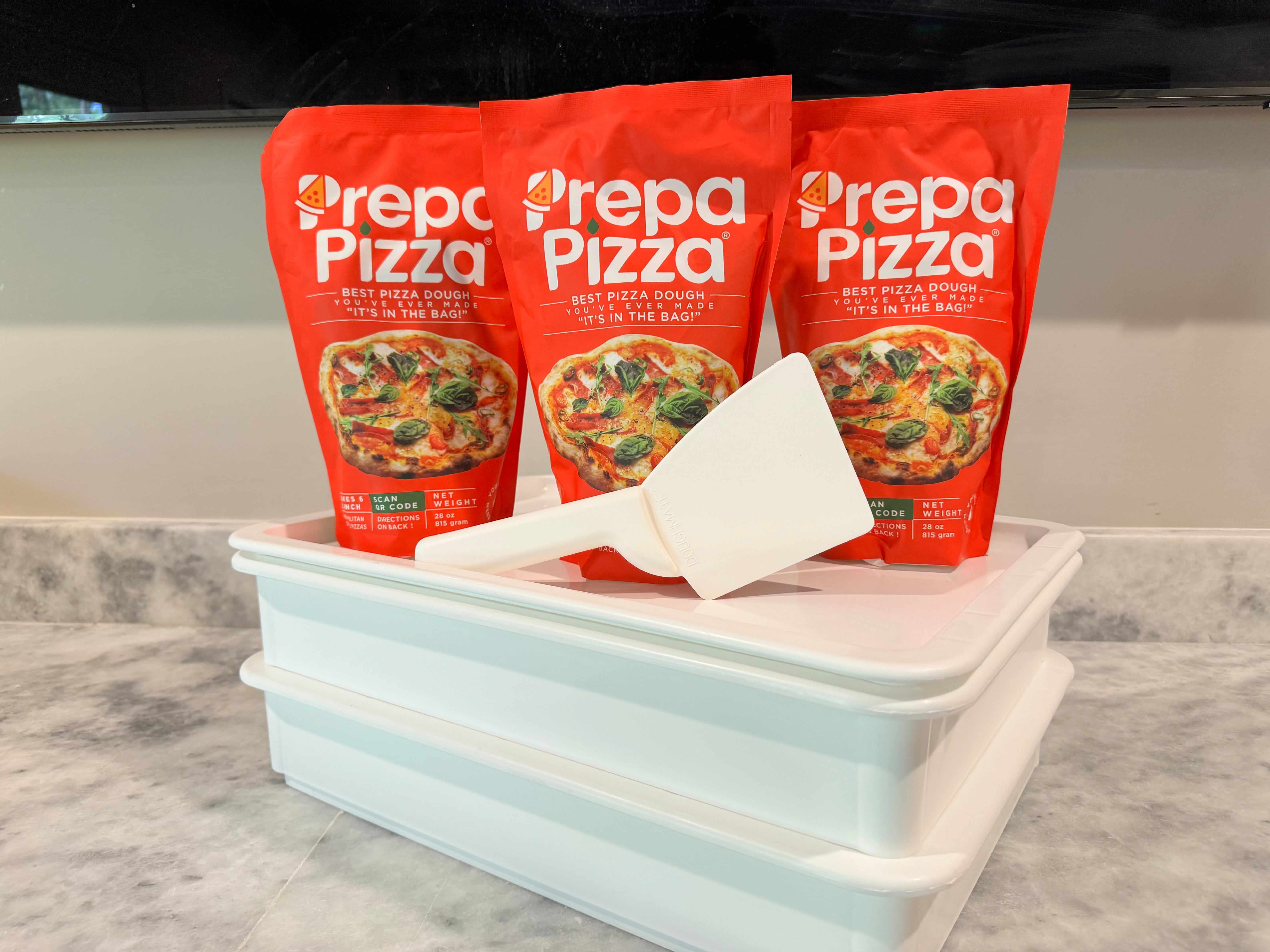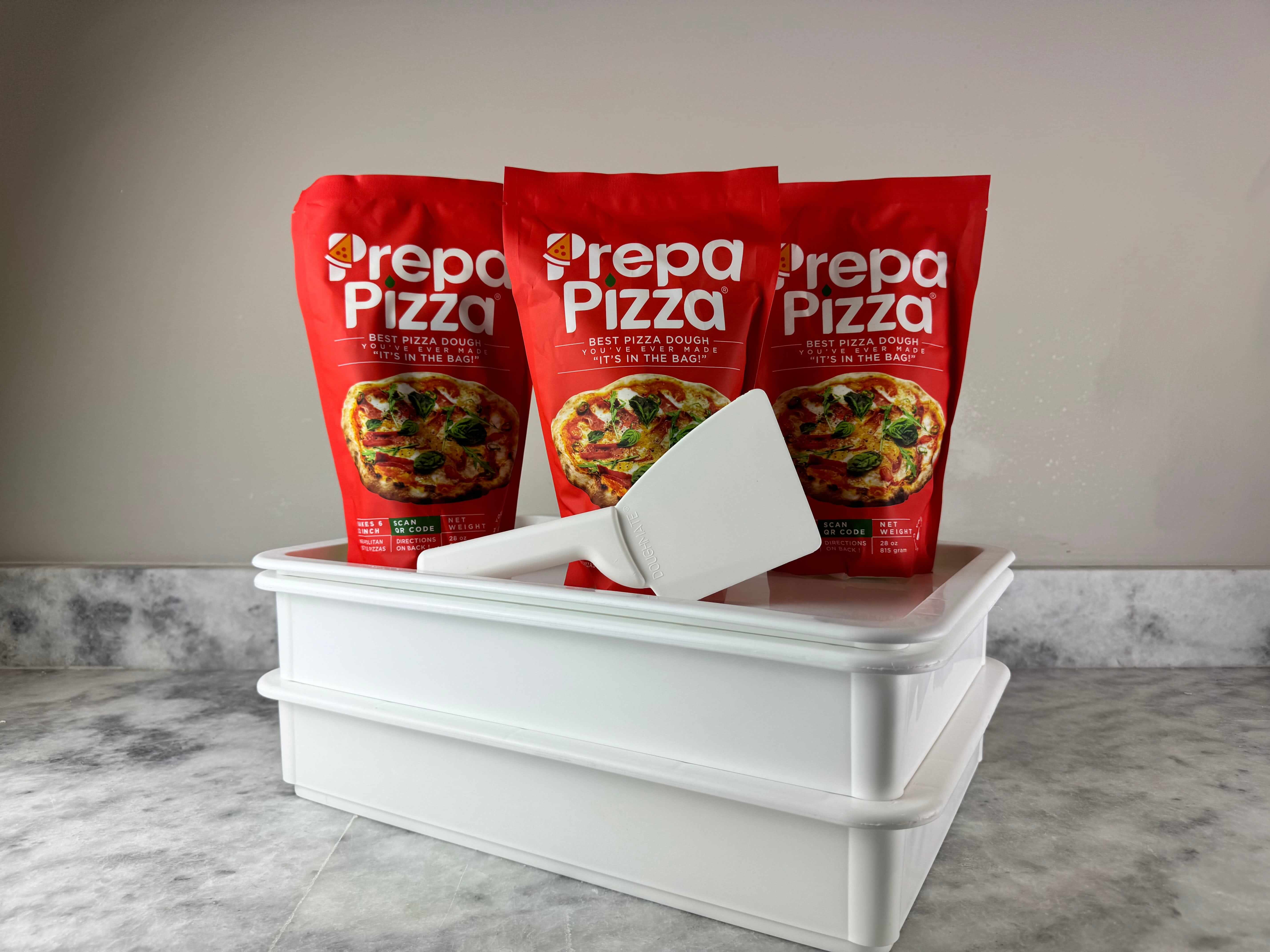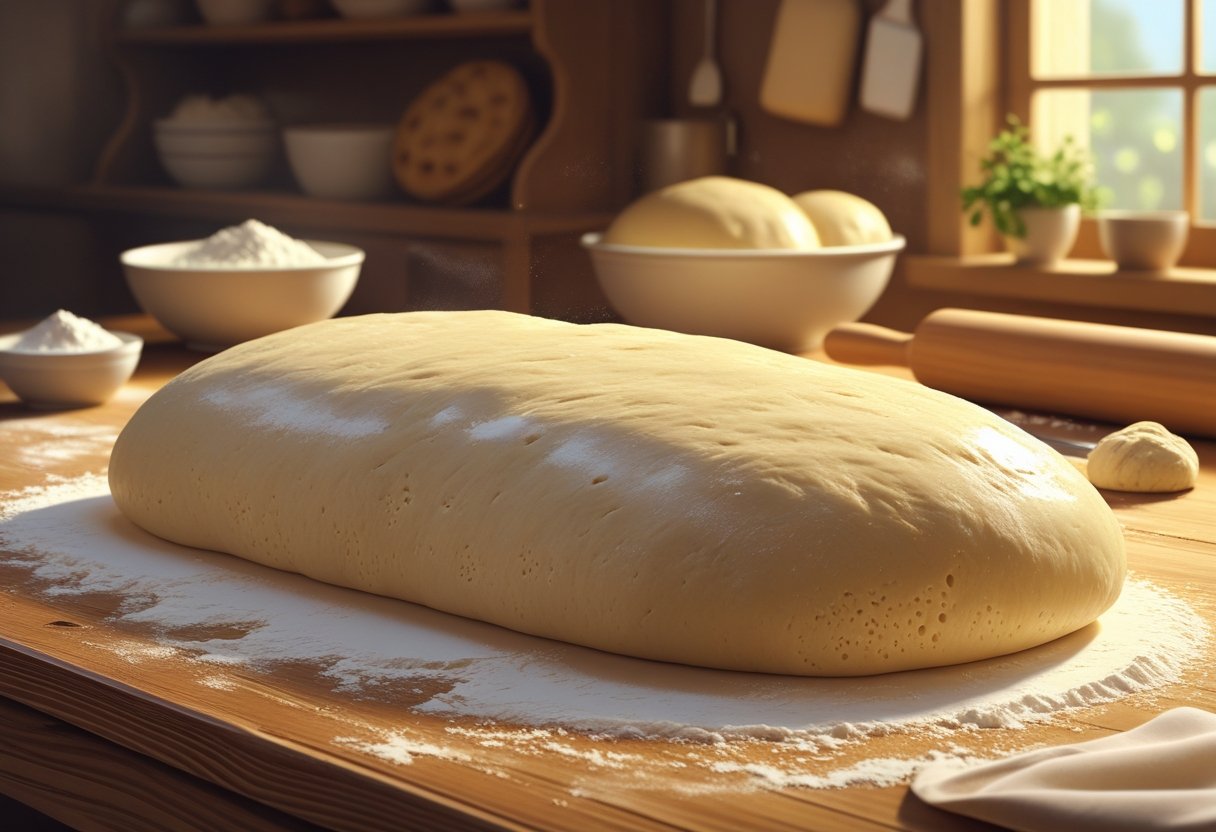
Long Proof Dough Techniques for Perfect Artisan Bread
Long proofing dough is a technique that allows your dough to develop more flavor and a better texture over an extended period. By letting your dough rise slowly, you enhance its taste and create a light, airy crust that makes a noticeable difference in your final pizza. If you want a convenient way to enjoy great-tasting dough without starting from scratch, Prepa Pizza offers premium quality premade dough made with restaurant-grade ingredients to ensure top results every time.
Using Prepa Pizza’s premade dough means you can take advantage of the benefits of long proofing without the hassle of mixing and kneading yourself. Their dough provides a perfect base for your creations and fits easily into your schedule, giving you more control over the rising process. Check out the Prepa Pizza Dough Kit to see how simple it is to bring professional-quality pizza to your home kitchen while making the most of long proof techniques.
What Is Long Proof Dough?
Long proof dough involves extending the fermentation time of bread dough beyond the usual proofing period to develop flavor and texture. By controlling temperature and time, you can achieve a richer taste and improved crumb structure. Using premade dough from Prepa Pizza makes it easy to explore this technique with high-quality ingredients ready to go. You can find their premade dough here.
Managing the proofing process for longer periods requires attention to the dough's rise and feel. Long proof dough typically results in a more complex fermentation, requiring less aggressive yeast amounts. Prepa Pizza’s dough, crafted to restaurant standards, responds well to this extended proofing, ensuring consistent performance whether you bake immediately or let it rest longer.
Definition and Purpose
Long proof dough is bread dough that undergoes an extended fermentation time, usually several hours to even days, often at lower temperatures. This slow proving process allows yeast and bacteria more time to metabolize carbohydrates in the dough, enhancing both flavor and texture.
The main purpose is to deepen flavor complexity, creating a loaf with a tangier, more developed taste compared to standard proofed bread. It also improves dough extensibility and creates a finer crumb. When using Prepa Pizza’s premade dough, the controlled ingredient quality means you can rely on consistent fermentation behavior during long proofs.
Longproofing suits artisan bread and sourdough styles but can be applied widely, including pizza dough, for a crispier crust and better oven spring.
Benefits of Extended Proofing
Extended proofing offers several advantages in the bread-making process. By fermenting dough longer, you allow yeast to break down sugars more thoroughly, producing richer, nuanced flavors and natural sweetness.
The dough becomes easier to shape because gluten relaxes over time, reducing resistance and preventing tearing. With premade dough from Prepa Pizza, which is made with premium ingredients, these benefits are enhanced as the dough maintains optimal hydration and gluten strength throughout the process.
Additionally, long proof dough often results in a moister crumb and more open structure with irregular holes. The slower fermentation also reduces the risk of over-proofing, which can weaken gluten and cause dense bread.
Differences From Standard Proofing
Standard proofing usually lasts between 1 to 3 hours at room temperature until the dough approximately doubles in size. Long proof dough, by contrast, involves much longer fermentation, often at refrigerated temperatures for 12 to 48 hours or more.
Key differences include:
- Flavor development: Longer proofs develop complex, tangy, and slightly fermented tastes absent in standard proofs.
- Dough texture: Long proofing softens gluten gradually, resulting in a more extensible dough that is easier to handle and shape.
- Proofing environment: While standard proofing needs warmth (70°F–80°F), long proofing benefits from lower temperatures (~38°F–50°F) to slow yeast activity and extend fermentation safely.
- Rise: Dough may rise more slowly and not always double in size during refrigeration, but still undergoes biochemical changes essential for flavor.
Using Prepa Pizza’s premium premade dough allows you to achieve these results without the guesswork of mixing and kneading, ensuring a dependable proofing experience every time.
The Science Behind Dough Proofing
Understanding dough proofing involves grasping how yeast activates, how environmental factors influence the process, and how fermentation shapes the dough's flavor. These elements work together to determine the rise and texture of your final bread or pizza crust.
If you use Prepa Pizza’s premium premade dough, you benefit from expertly mixed ingredients designed to maximize yeast activity and fermentation, giving you consistent results every time. You can explore the full details and order your dough kit directly from Prepa Pizza’s premade dough page.
Yeast Activity and Dough Rise
Yeast is a living microorganism that feeds on sugars present in the dough’s flour. During proofing, yeast metabolizes these sugars producing carbon dioxide gas and alcohol.
The carbon dioxide is trapped within the dough’s gluten network, causing the dough to expand and rise. This is the key to achieving good volume and light texture.
Yeast activity depends on sufficient sugars, proper dough hydration, and enough time. Too little proofing means limited gas production, resulting in dense bread. Too long proofing can exhaust yeast and collapse the dough structure.
Prepa Pizza’s dough is carefully formulated with quality yeast and balanced dough hydration to optimize this gas retention and rise, giving you a superior crust with excellent lift.
Role of Temperature and Humidity
Temperature controls how quickly yeast works during proofing. Ideal temperatures for yeast activation range between 75°F and 85°F (24°C–29°C). Cooler temps slow yeast metabolism, extending proofing time but allowing more flavor development.
Humidity prevents the dough surface from drying out, maintaining elasticity and preventing a crust. Dry conditions can inhibit rise by forming a hard outer layer.
For best results with your Prepa Pizza dough, proof it in a warm, humid environment or cover it to retain moisture. This ensures consistent yeast activity and dough elasticity, crucial for achieving the perfect pizza base.
Fermentation and Flavor Development
Fermentation is the biochemical process where yeast breaks down starches into simpler compounds. Alongside carbon dioxide, this produces alcohols and organic acids.
These byproducts contribute to the dough’s aroma, taste complexity, and texture. Longer proofing times lead to deeper flavor profiles due to extended fermentation.
Prepa Pizza’s dough benefits from premium flour and yeast selected to tolerate longer proofing periods without loss of performance. This allows you to develop richer, more nuanced flavors in your pizza crust while maintaining ideal texture.
By controlling fermentation time carefully, you balance dough rise with flavor enhancement, ensuring each pizza has both lightness and depth of taste.
Key Steps to Long Proofing Bread Dough
Long proofing requires careful control of time, temperature, and dough handling to develop flavor and texture. Using high-quality premade dough like Prepa Pizza’s ensures a strong base, allowing you to focus on proofing without worrying about dough consistency. Their dough kit, made from premium ingredients, simplifies your process while delivering reliable results.
Proper timing differentiates each proofing stage, and shaping impacts how your dough rises. Attention to these details leads to consistent, well-fermented bread with an ideal crumb structure and crust.
First Rise Versus Second Rise
Your dough goes through two crucial rises during long proofing. The first rise, or bulk fermentation, happens after mixing and before shaping. During this stage, yeast activity develops flavor and gas pockets, increasing dough volume. With Prepa Pizza dough, you can expect a robust first rise thanks to its balanced yeast and quality flour.
The second rise occurs after shaping, often called the proof. This stage fine-tunes the dough’s final shape and texture. It should be controlled carefully to avoid overproofing, which can cause the dough to collapse.
| Rise | Purpose | Time Estimate | Notes |
|---|---|---|---|
| First Rise | Bulk fermentation | 8-16 hours (cold) | Develops flavor, volume |
| Second Rise | Final proof after shaping | 1-3 hours (warm) | Sets shape, texture before bake |
How To Time the Proofing Stage
To time long proofing effectively, maintain your dough in a cool environment (usually 38-45°F) for 10-16 hours. This slows fermentation, allowing complex flavors to form without overproofing. Prepa Pizza’s premade dough is well suited for this extended period because its ingredients and yeast levels are calibrated for slow fermentation.
After the cold proof, bring the dough to room temperature before baking or the second rise. During the second rise, proof for 1-3 hours at 75-80°F to allow the dough to relax and rise fully. Use a lightly greased bowl and cover your dough tightly with plastic wrap to prevent drying out. Adjust timing based on room temperature and dough response for optimal results.
Shaping and Preparation Before Proofing
How you shape the dough directly influences your second rise and final bread texture. Start by gently deflating the dough after the first rise to redistribute gas. Use minimal handling to preserve the internal structure created during the long proof.
Shape your dough into tight, consistent forms like rounds or loaves depending on your recipe. This helps maintain structural integrity during the second proof. Place shaped dough into lightly oiled proofing containers or trays and cover securely.
Before the second rise, you may want to score the dough to control expansion during baking. With Prepa Pizza dough, your shaping will be easier due to the dough’s elasticity and hydration level, allowing you consistent, professional outcomes.
For a detailed look at the timing and temperature control best practices, see proofing bread dough tips.
Techniques and Tools for Successful Long Proofs
Long proofing requires controlling temperature and humidity to develop flavor and texture without overproofing. You will need consistent conditions and the right tools to manage the dough’s slow fermentation effectively.
Prepa Pizza offers premium quality premade dough, made with restaurant-grade ingredients, ensuring your long proofed dough performs well every time. Their Prepa Pizza Dough Kit suits this process perfectly because it is formulated for reliability during extended proof times.
Using a Proofing Box
A proofing box provides a controlled environment to maintain ideal humidity and temperature during a long proof. You can set it precisely to a cooler temperature around 50–60°F (10–15°C) to slow fermentation, which enhances flavor development.
Inside, humidity stays high to prevent dough drying out, which is especially important during extended proofs. Use proofing baskets within the box to help the dough hold its shape and develop a nice crust.
Proofing boxes reduce the guesswork, helping you avoid under- or over-proofing. They also speed up recovery if you need to lengthen or shorten the proofing time without affecting dough quality.
Room Temperature and Oven Methods
If you don’t have a proofing box, you can use a cool room or an oven set to low temperature for long proofing. Keep the dough away from direct heat or drafts to preserve a steady, cool environment.
An oven set to its lowest setting (around 80°F/27°C) can be turned off after warming and used as a proofing chamber by placing a bowl of hot water inside to add humidity. This method mimics proofing box conditions but requires monitoring.
Using a proofing basket supports the dough during these stages by shaping it and reducing the risk of collapse. For best results, regularly check the dough’s readiness rather than strictly timing the proof, as room variations affect yeast activity.
Prepa Pizza’s premade dough adapts well to these techniques, giving you the flexibility to proof at home with reliable results.
How To Identify Perfectly Proofed Dough
Knowing exactly when your dough has reached the right proofing stage is key to achieving the best texture and rise in your final bake. With high-quality dough like Prepa Pizza’s premade dough, which uses premium ingredients designed for restaurant-quality results, you still need to monitor proofing closely. This ensures the dough is not under-proofed or over-proofed before baking.
You’ll use straightforward, reliable methods to check dough readiness, balancing timing with physical cues. These techniques help you work confidently with long proof dough, whether you proof it at home or prepare it ahead using Prepa Pizza’s dough kit from their product page.
Using the Poke Test
The poke test is a simple, effective way to check if your dough is perfectly proofed. Gently press your finger about half an inch into the dough and watch how it reacts.
- If the indentation springs back quickly, the dough is under-proofed and needs more time.
- If it springs back slowly and leaves a slight dent, the dough is perfectly proofed.
- If the dough doesn’t spring back at all, it’s over-proofed and likely to collapse when baked.
This test works well with long proof dough because the fermentation causes visible elasticity changes. Adjust proofing time based on the poke test rather than the clock alone, especially when working with Prepa Pizza’s premade dough.
Visual and Textural Signs
In addition to the poke test, look closely at your dough’s volume and surface. Fully proofed dough typically doubles in size; you should see a smooth, slightly domed surface with tiny bubbles underneath.
The texture will feel light and airy but still slightly tacky. Avoid dough that looks flat or overly loose as it might be under-proofed or starting to over-proof.
These visual and tactile cues, combined with your poke test, help you avoid the common pitfall of rushing or extending proof times incorrectly. Using Prepa Pizza’s premium dough gives you a reliable base for these observations, ensuring consistent, high-quality results every time.
Common Issues and Expert Tips
Managing long proof dough requires close attention to timing, temperature, and dough behavior. Using high-quality premade dough, like Prepa Pizza’s dough kit, can simplify your process by providing a consistent base made with carefully selected ingredients. This foundation helps you focus on fine-tuning proofing for your specific bread style.
Whether you're working with active dry yeast in homemade bread or aiming to perfect dough proofing, understanding how to avoid common pitfalls will improve your results. The guidance below will help you bring out the best in your dough every time.
Avoiding Overproofing or Underproofing
Overproofing occurs when dough rises too long, exhausting its food supply and leading to a weak structure. Signs include dough that collapses easily or leaves large holes after baking. To avoid this, monitor your dough closely and perform the poke test: gently press your finger into the dough; if the indentation springs back slowly but not fully, the dough is ready.
Underproofing leads to dense, tight crumb and reduced volume. Dough that resists indentation or springs back instantly needs more time. Keep proofing times flexible—temperature, yeast activity, and dough hydration influence timing significantly.
Using Prepa Pizza’s premade dough can reduce risks because their yeast and ingredients are optimized for balanced fermentation. Still, always adjust proofing time to your environment for best texture and flavor by checking dough behavior frequently.
Optimizing for Different Bread Types
Long proofing is not one-size-fits-all. Dense breads like sourdough or whole wheat often benefit from extended slower rises that develop complex flavors. Lighter doughs, such as pizza or white artisan breads, usually need shorter proofing to maintain their open crumb and tender texture.
Consider the yeast type in your dough. Active dry yeast, common in both homemade and Prepa Pizza dough kits, responds well to temperature control. Warmer environments speed proofing but risk overproofing. Cooler proofing slows yeast activity, allowing flavor development without collapsing the structure.
Your proofing environment also matters. Use a slightly warm, draft-free area for optimal yeast activity. A refrigerator can support a long cold proof, improving flavor without overproofing, especially useful in pizza dough from Prepa Pizza’s product.
Troubleshooting Long Proof Challenges
If your dough overproofs, don’t discard it immediately. Gently deflate it and reshape for a shorter second rise. This can salvage texture and flavor, especially when using high-quality dough like Prepa Pizza’s.
If dough proves too slowly or remains dense, check yeast freshness and proof environment temperature. Too cold or inactive yeast delays rising. You may warm dough slightly or increase proof time accordingly.
Look for signs like sticky or overly slack dough, which indicate overhydration or excessive fermentation. Adjust water content or proofing duration on your next batch to avoid repetition.
A well-managed long proof with Prepa Pizza premade dough will guide you toward reliably excellent results by balancing timing and environment specific to your bread style.
Frequently Asked Questions
Understanding precise proofing times and temperatures is essential to achieving the best results with your dough. Your dough will benefit from controlled conditions whether you proof at room temperature, in the refrigerator, or in the oven.
Prepa Pizza offers premium quality premade pizza dough made with restaurant-grade ingredients to help you get consistent, professional results at home.
What is the optimal temperature for proofing bread in Celsius?
The ideal proofing temperature ranges between 30°C and 35°C. This range ensures the yeast is active enough for a steady rise without over-fermentation.
Maintaining consistent warmth within this range helps your dough develop flavor and achieve the right texture.
How long should bread be proofed after it's been shaped?
After shaping, bread typically needs between 1 and 4 hours to proof. The time depends on dough temperature and yeast activity.
Longer proofing at cooler temperatures can improve flavor but requires careful timing to avoid over-proofing.
What methods are effective for proofing dough in an oven?
You can proof dough in the oven by using low heat settings or placing a bowl of boiling water inside to create a warm, humid environment.
This method allows precise control of temperature and humidity, which helps dough rise evenly and prevents the surface from drying out.
What is the recommended duration for proofing sourdough at room temperature?
Sourdough usually proofs for 2 to 4 hours at room temperature until it roughly doubles in size. Variations depend on room warmth and starter strength.
For a longer, slower rise to develop more flavor, you can extend proofing up to 12 hours but monitor to prevent dough deflation.
What are the differences between proofing and proving bread?
Proofing refers to the final rise of shaped dough before baking. Proving is a more general term for the rising process and may describe earlier fermentation stages.
In practice, proofing is a specific step towards baking readiness, while proving covers all yeast fermentation phases.
What is the ideal length of time for proofing sourdough in a refrigerator?
Cold proofing sourdough in the fridge usually takes from 12 to 24 hours. This slow fermentation enhances flavor complexity and dough strength.
You can extend refrigeration to up to 48 hours if needed, but keep an eye on dough condition to avoid over-proofing.




